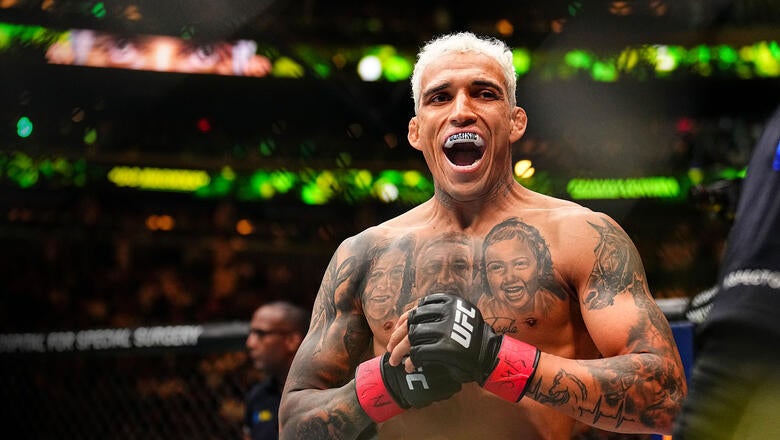Huntr/x are still goin’ up, up, up around the world.
While reflecting on KPop Demon Hunters’ international success, the lead singers of the Netflix film EJAE, Audrey Nuna and Rei Ami shared their most golden fan encounters.
“I went to…

Huntr/x are still goin’ up, up, up around the world.
While reflecting on KPop Demon Hunters’ international success, the lead singers of the Netflix film EJAE, Audrey Nuna and Rei Ami shared their most golden fan encounters.
“I went to…

Please enable JavaScript if it is disabled in your browser or access the information through the links provided below.
October 08, 2025
For release at 2:00 p.m. EDT
The Federal Reserve on Wednesday released the minutes of the Federal Open Market Committee meeting that was held on September 16–17, 2025.
The minutes for each regularly scheduled meeting of the Committee are generally published three weeks after the day of the policy decision. The descriptions of economic and financial conditions contained in these minutes are based solely on the information that was available to the Committee at the time of the meeting.
The minutes can be viewed on the Board’s website.
For media inquiries, e-mail [email protected] or call 202-452-2955.
Minutes of the Federal Open Market Committee
September 16–17, 2025: HTML | PDF
Last Update:
October 08, 2025

Julian Wilkison-Duran has created what he calls the Poor Man’s Machine Learning model for the browser.
“What I really want to do is bring that machine learning into the frontend and I don’t believe that models need a billion…

Amazon’s October Prime Day sale is here, and it’s proving to be a good opportunity to save some money on accessories for your Nintendo Switch 2. While the console isn’t discounted, a number of recommended add-ons are cheaper than ever (some…

IU impact: We bring new ways of using generative AI into the retail space to help businesses in Indiana and beyond build better product pages, clearer review summaries and stronger customer service.
Virtually every business is trying to leverage generative AI to find efficiencies, including retailers in local malls and online shops. But does using the tool actually increase sales?
That’s the question that Indiana University assistant professor Garim Lee’s research attempts to answer, blending retail and technology. With the support of IU Global, she took her research international, traveling to Zagreb, Croatia, to collaborate and present at a conference that shares advancements in her field. Her time in Zagreb deepened her curiosity about how people in different countries read AI-generated information, providing insights that will be valuable for Indiana retailers working on building trust.
Lee’s career began in apparel design and grew to include consumer psychology and statistics. The mix of fashion know-how, data analysis and human insights helps her ask clear questions about how people react to AI-generated content and judge AI-designed fashion, and how human and AI interactions shape shopping choices.
For both convenience and practicality, her initial research focused on U.S. consumers, but she quickly realized the need for a broader approach.
“How people think, how they evaluate products or service-related information really varies from region to region, country to country,” Lee said. “Exploring how different countries’ people think about and interpret information — and information from AI — is really crucial for global companies.”
Once Lee identified the need to expand her research base, she looked for opportunities to do so. The Recent Advances in Retailing and Consumer Sciences Conference gave her access to scholars who study different markets while bringing back fresh ideas to IU students and to firms across Indiana.
Lee listened to talks, took notes on methods and met scholars from across Europe and beyond. She also presented her work to test the strength of her ideas, gather feedback to sharpen her experiments and expand her network. This exposed her to the novel ways that some of her colleagues run studies and opened doors for future collaborations.
This is exactly how collaboration abroad helps IU and Indiana: It accelerates the flow of methods, data and partners into the state.
The trip also moved her academic goals forward. The project she shared in Zagreb is still in progress, and the feedback she received will guide her as she builds a full manuscript for submission this fall. She plans to finalize the experiments, write up the results and discussion, and send the paper to a journal later this month.
While the conference helped her solidify her previous research, she also left with ideas for new studies and with a plan to pursue an external grant. Those next steps can lead to new publications, funding and learning opportunities for IU students who want to work in retail analytics and consumer insights.
“Attending an international conference is very costly; the support from IU Global really helped me,” Lee said. “Connecting with international scholars is so important for early-stage researchers, so I’m grateful to have gotten the experience.”
The time Lee spent in Zagreb reinforced a key idea in her research: Consumer responses vary across regions. A model trained on only U.S. data will miss important differences in how people trust and use AI.
Future projects will compare how shoppers in different countries interpret AI outputs. Lee’s research will help local Indiana retailers understand when AI tools build trust and when they create confusion, whether they’re selling products to fellow Hoosiers or around the world. While Lee plans to publish her findings later this fall, her work won’t stop with a single paper.
“I had so many suggestions for future projects and recommendations from that one conference session!” Lee said. “I plan on looking for and applying for external grants so that I can expand my research beyond this initial project.”
Clear evidence received from AI leads to better product pages, smarter review summaries and stronger customer service. Students trained with these insights will graduate ready to help Indiana companies compete. International partners also raise IU’s profile, attract collaborators to campus, and create pipelines for joint grants and internships. In short, this brief trip to Croatia brings back advanced methods, new peers and new ideas that support research, teaching and the state’s economy.

Dexter: Resurrection is being brought back to life for another season.
Paramount+ has formally renewed the Dexter sequel series for season two — confirming previous statements previously made by returning showrunner


Beijing Dacheng Law Offices, LLP (“大成”) is an independent law firm, and not a member or affiliate of Dentons. 大成 is a partnership law firm organized under the laws of the People’s Republic of China, and is Dentons’ Preferred Law Firm in China, with offices in more than 40 locations throughout China. Dentons Group (a Swiss Verein) (“Dentons”) is a separate international law firm with members and affiliates in more than 160 locations around the world, including Hong Kong SAR, China. For more information, please see dacheng.com/legal-notices or dentons.com/legal-notices.

He captured hearts around the world, but he embraced no role more enthusiastically than the one that cemented him among the greatest Brazilians to grace the Octagon. From the Gracies to Anderson Silva to José Aldo and several others in between,…